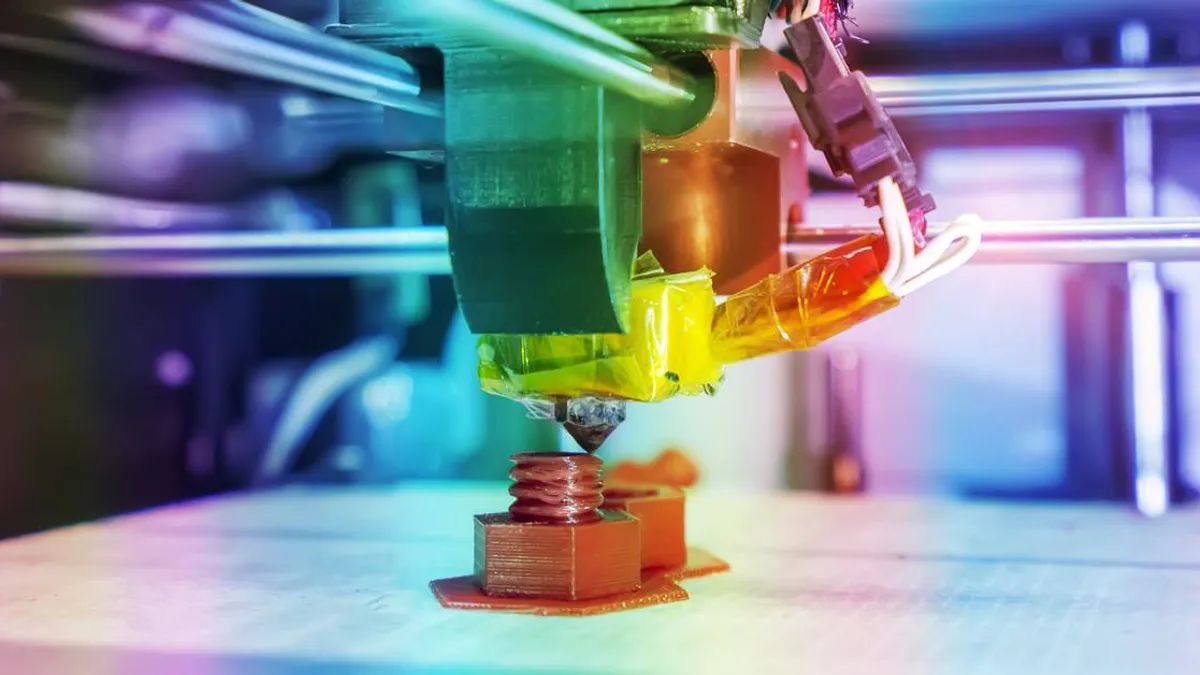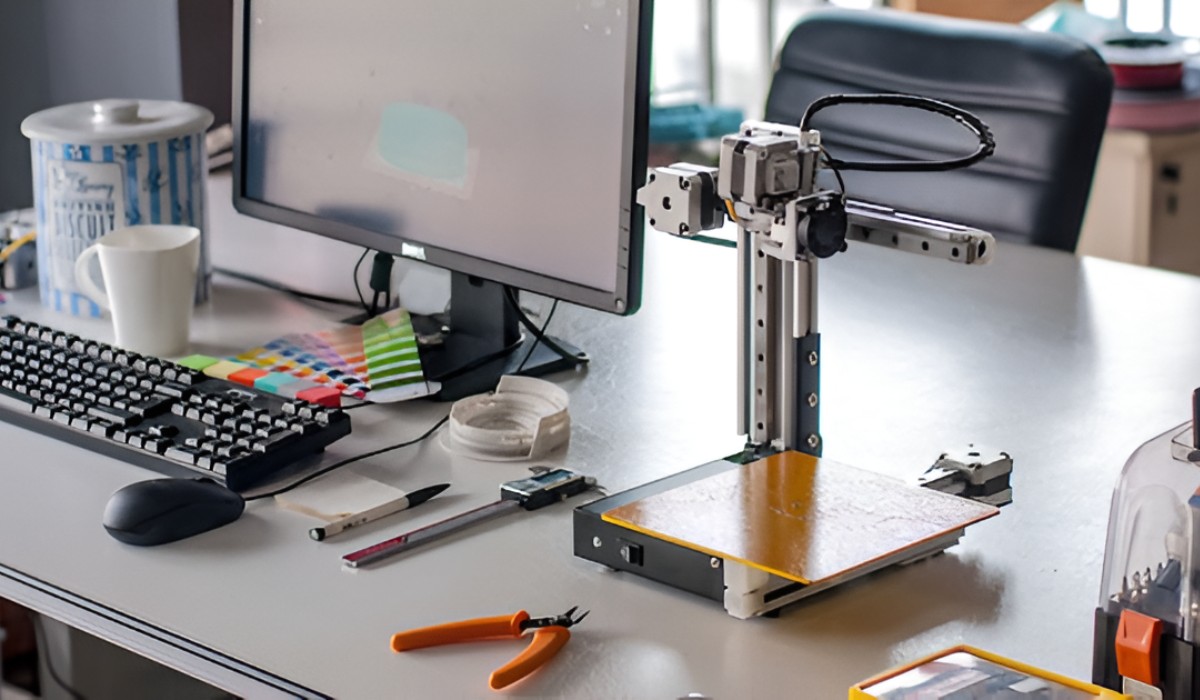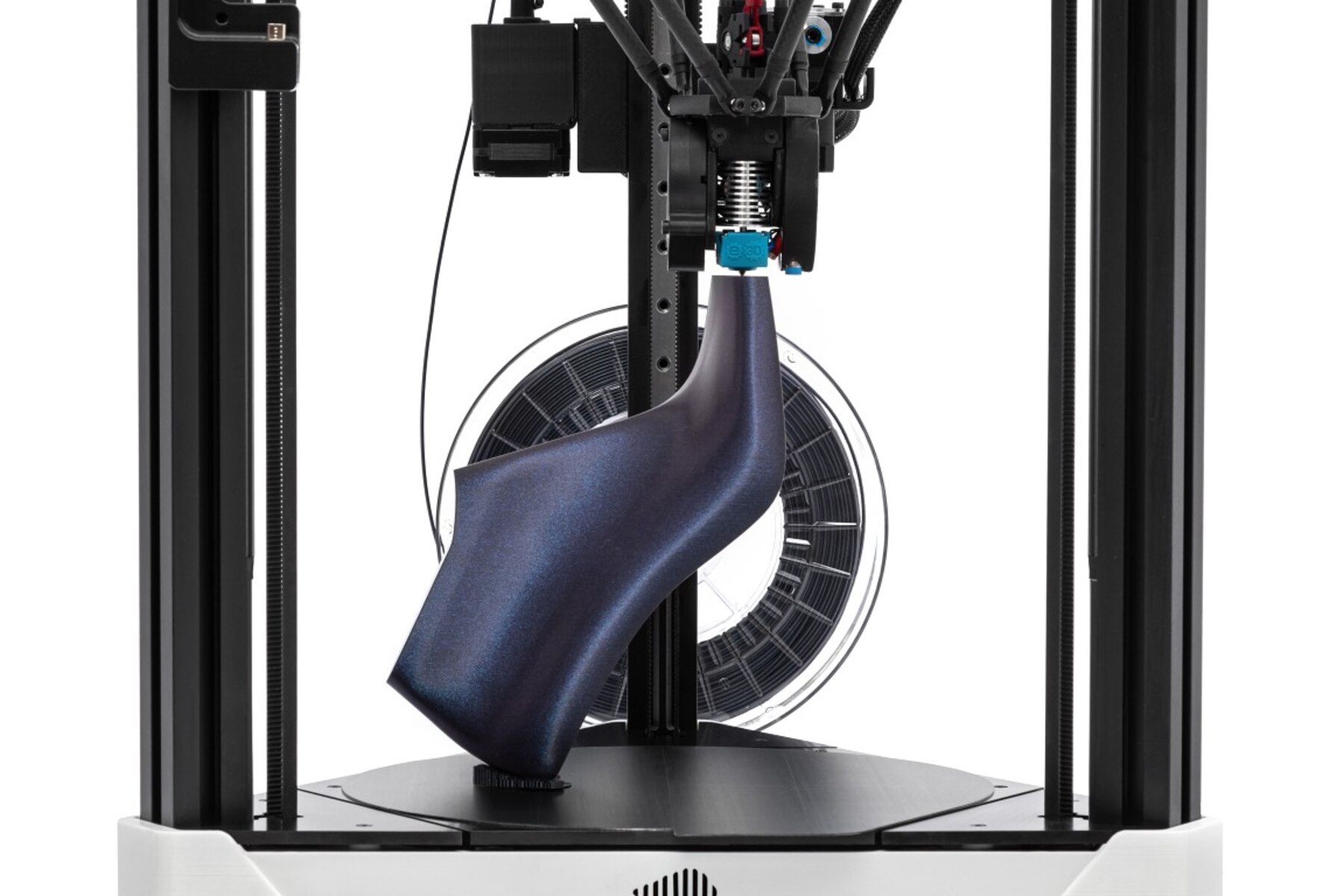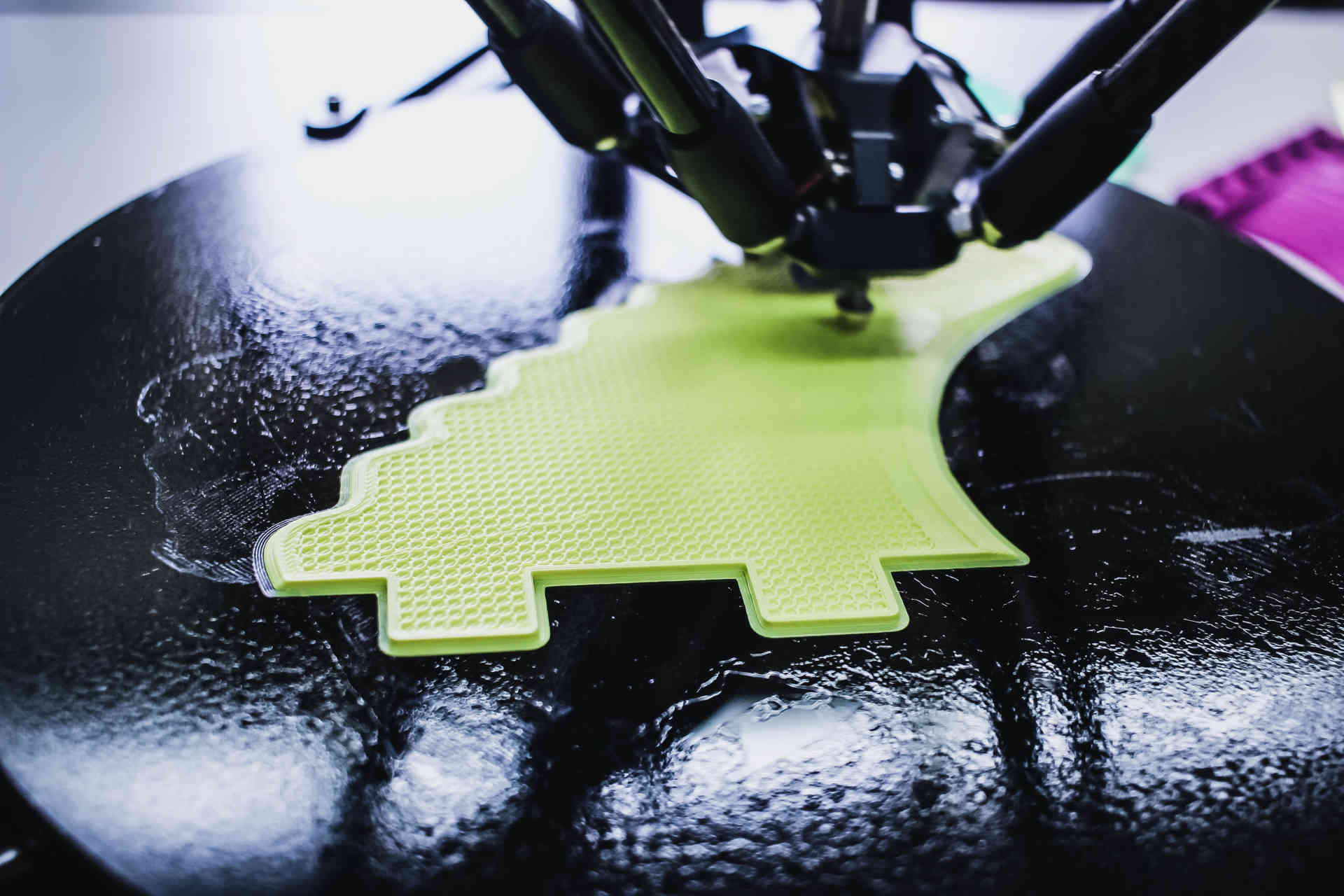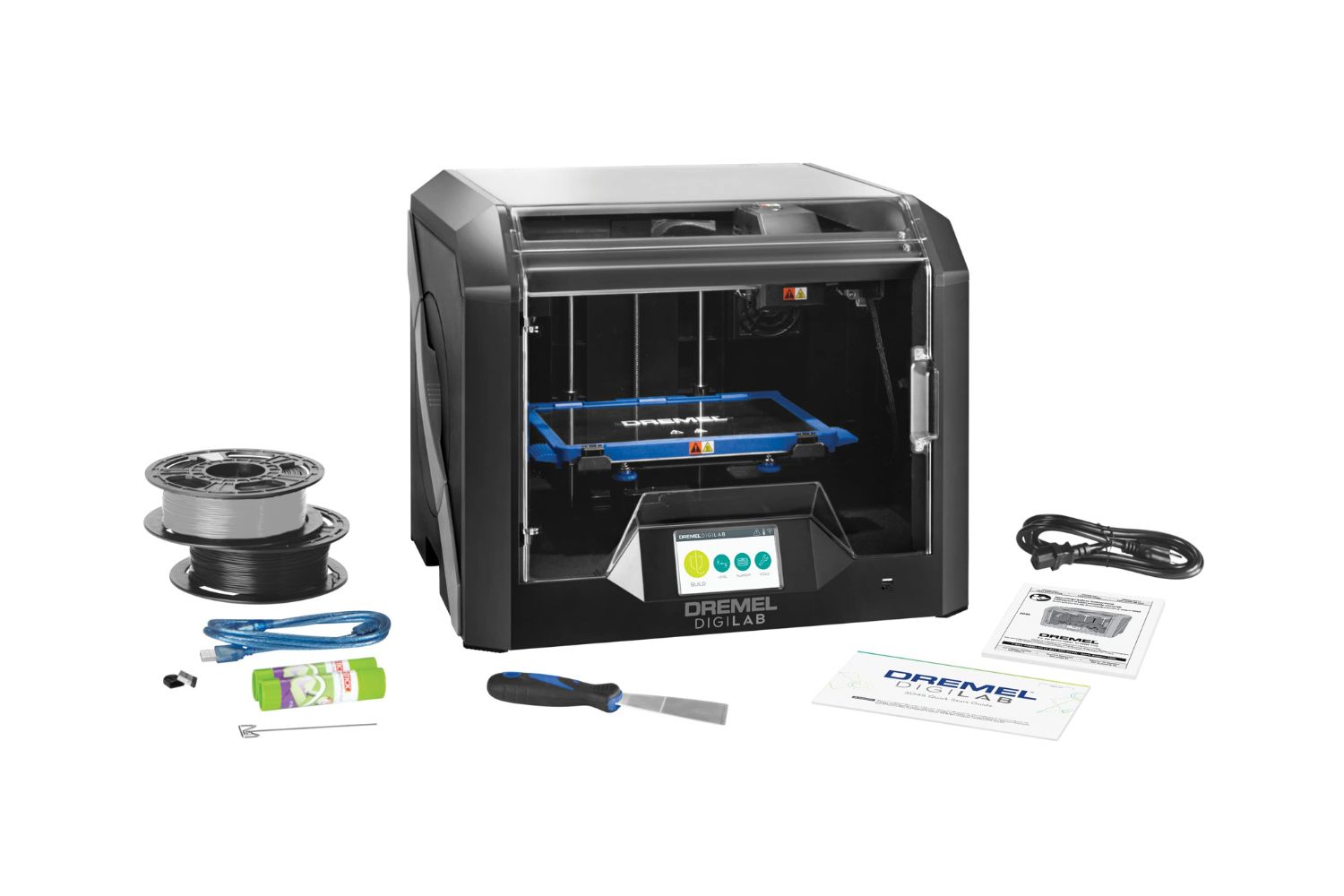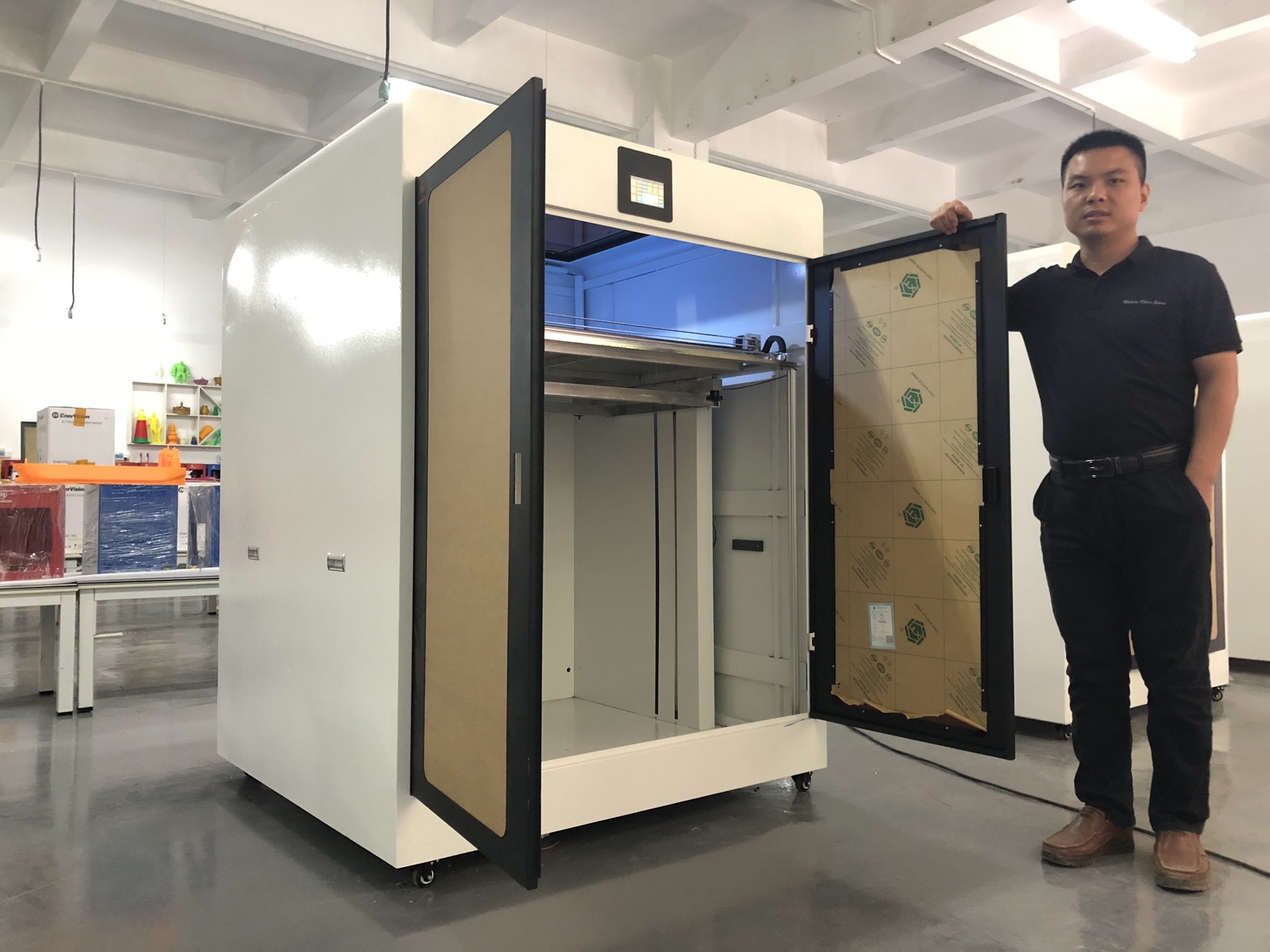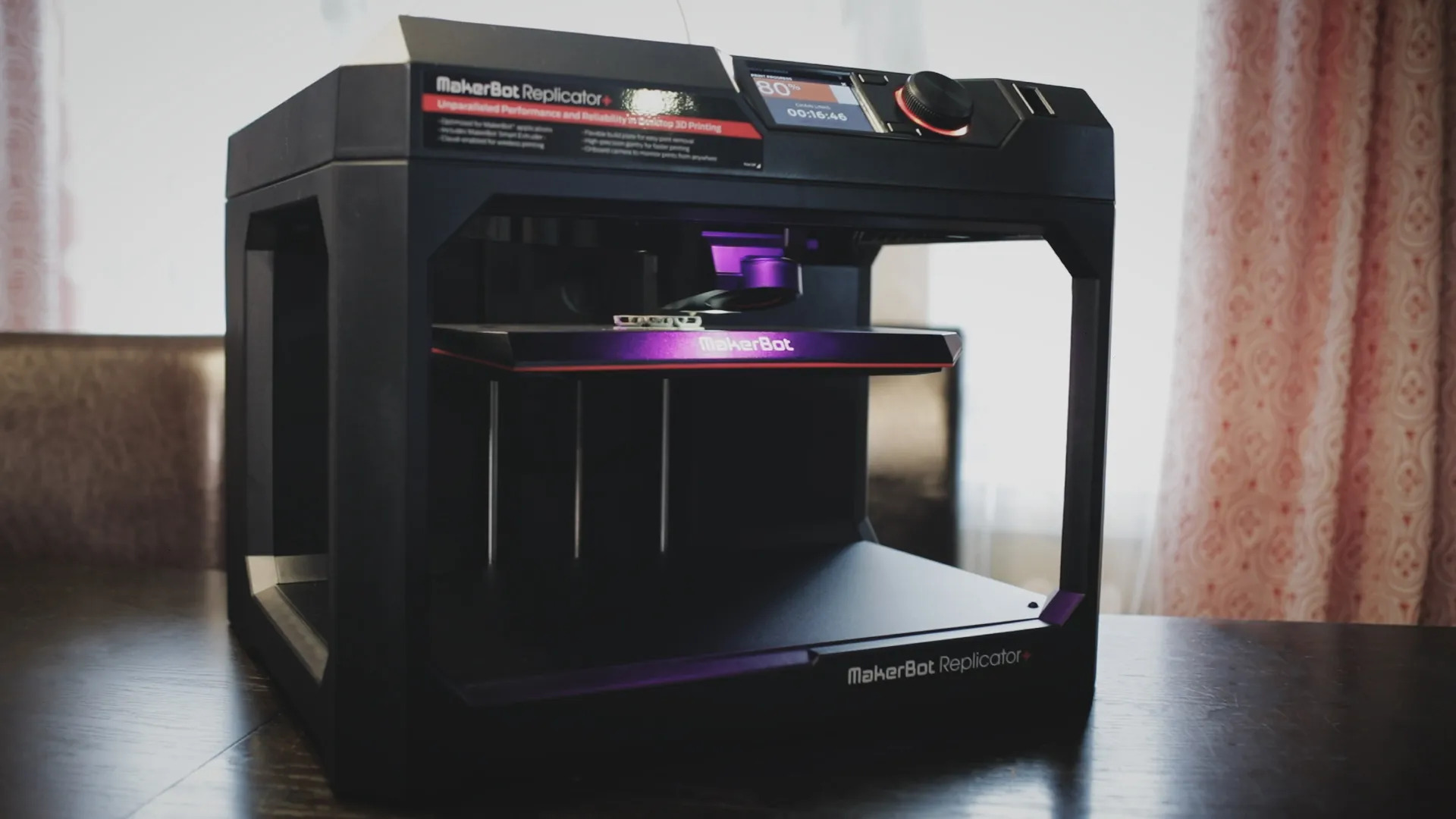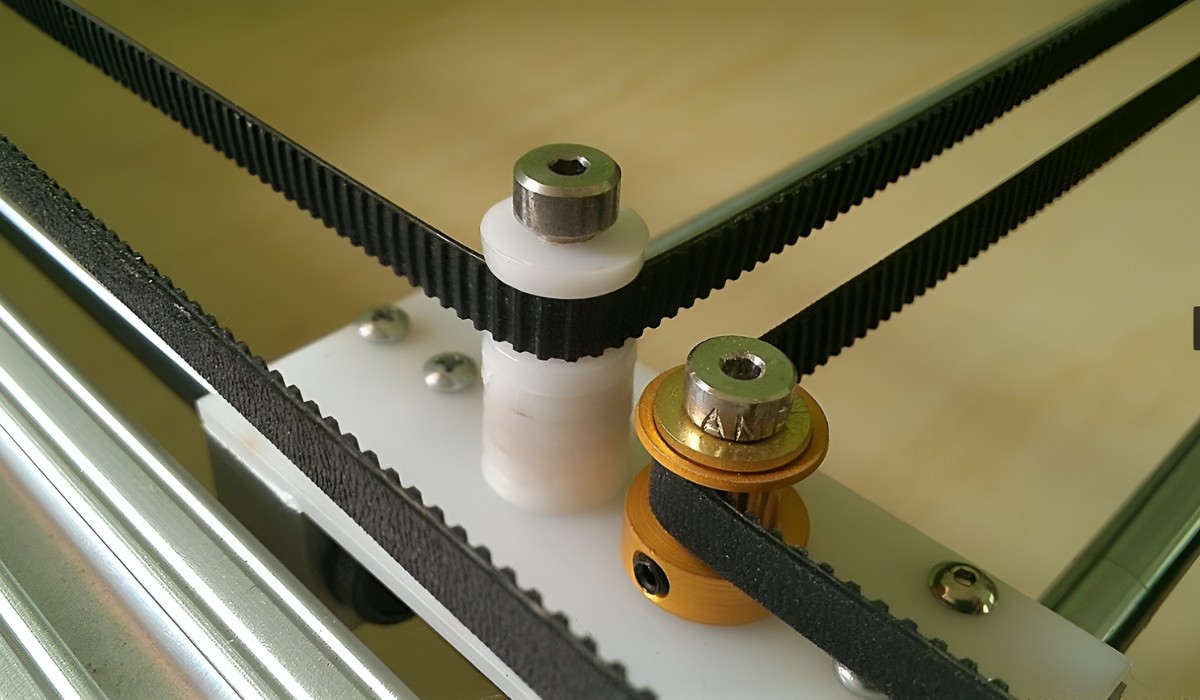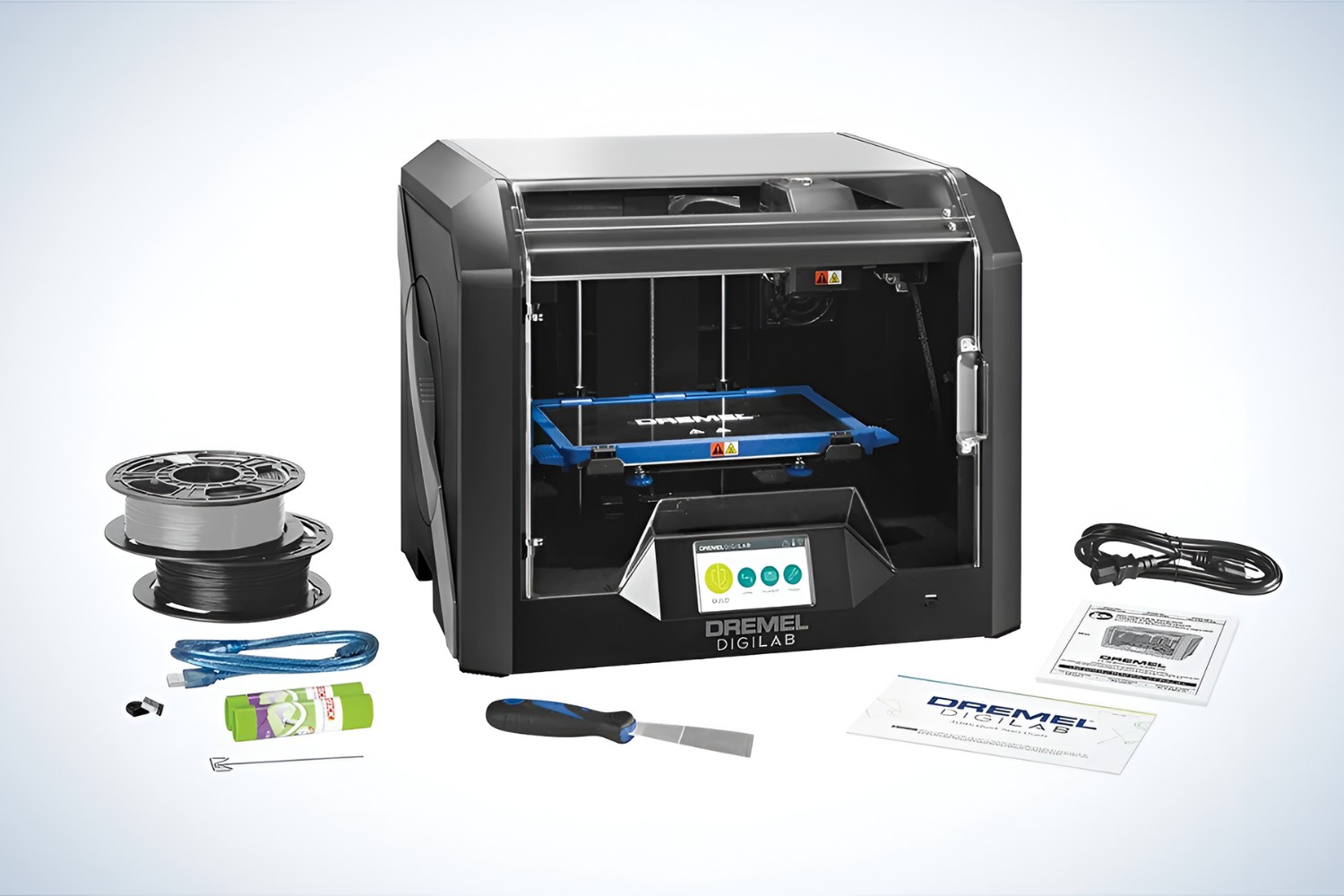Introduction
With the rapid advancements in technology, 3D printing has emerged as a groundbreaking innovation that has revolutionized various industries. This cutting-edge technology allows the creation of three-dimensional objects from digital files using a process called additive manufacturing. The possibilities with a 3D printer are seemingly endless, as it opens up a whole new world of creativity, innovation, and practical applications.
Unlike traditional manufacturing methods that involve subtracting material to create a final product, 3D printing adds material layer by layer, resulting in highly precise and customizable objects. This level of precision, combined with the versatility and cost-effectiveness of 3D printing, has made it increasingly popular among businesses, educators, artists, hobbyists, and even everyday individuals.
In this article, we will explore the various benefits and applications of 3D printing. From prototyping to customizations, from healthcare to home decor, 3D printing offers an array of possibilities that can transform the way we live, work, and create. So, let’s dive into the fascinating world of 3D printing and discover what this incredible technology can do for us.
Benefits of 3D Printing
3D printing offers a multitude of benefits that have revolutionized various industries and opened up new opportunities for creativity and innovation. Let’s explore some of the key advantages of this transformative technology:
- Prototyping: One of the major advantages of 3D printing is its ability to rapidly create prototypes. Traditional prototyping methods can be time-consuming and expensive, while 3D printing allows for quick iterations and modifications. This greatly speeds up the product development process and enables businesses to test and refine their designs more efficiently.
- Customization: 3D printing enables customization on a whole new level. Whether it’s personalized accessories, customized prosthetics, or tailored architectural models, 3D printing allows for the creation of unique, one-of-a-kind objects. This level of customization offers a wealth of possibilities for businesses and individuals alike.
- Education and Learning: 3D printing has become a valuable tool in education, as it allows students to bring their ideas to life and encourages hands-on learning. From creating prototypes for science projects to understanding complex concepts through tactile models, 3D printing enhances engagement and understanding in various educational disciplines.
- Artistic Creations: Artists and designers have embraced 3D printing as a medium for artistic expression. This technology enables the creation of intricate and complex sculptures, jewelry, and installations that were once challenging to produce. Artists can now push the boundaries of their creativity and showcase their unique visions in ways previously unimaginable.
- Replacement Parts: 3D printing has simplified the process of obtaining replacement parts for machines, appliances, and other items. Previously, sourcing or manufacturing specific parts could be time-consuming or even impossible. With 3D printing, objects can be reproduced quickly and cost-effectively, reducing downtime and increasing efficiency.
- Medical and Healthcare: The medical field has greatly benefited from 3D printing. It has enabled the production of patient-specific implants, prosthetics, and surgical models, enhancing treatment outcomes and patient care. 3D printing also plays a vital role in medical research, allowing for the development of more advanced medical devices and techniques.
- Home Decor and Accessories: 3D printing has transformed home decor by offering unique and customizable items. From intricately designed lampshades to personalized vases, 3D printing allows individuals to add a personal touch to their living spaces. It also provides opportunities for entrepreneurs to create and sell bespoke home decor products.
- Fashion and Jewelry: The fashion and jewelry industries have embraced 3D printing for its ability to create intricate and avant-garde designs. Designers can experiment with unconventional shapes and materials, resulting in stunning and unique pieces. 3D printing has also opened doors for small-scale jewelry makers who can now bring their designs to life without the need for expensive manufacturing processes.
- DIY Projects: 3D printing empowers individuals to become creators and inventors. Whether it’s building a customized drone or designing and producing unique household gadgets, 3D printing offers a way to bring ideas to life without relying on traditional manufacturing methods. It encourages a culture of innovation and creativity among DIY enthusiasts and hobbyists.
- Sustainability and Recycling: 3D printing contributes to sustainable practices by promoting the use of recycled materials. With the ability to convert recycled plastic into printable filament, 3D printing reduces waste and promotes a more eco-friendly approach to manufacturing. It also enables localized production, minimizing transportation and reducing the carbon footprint associated with traditional manufacturing processes.
These are just a few examples of the many benefits of 3D printing. From streamlining manufacturing processes to fostering creativity and innovation, this technology continues to transform industries and empower individuals to bring their ideas to life.
Prototyping
Prototyping plays a crucial role in product development, allowing businesses to test and refine their designs before mass production. Traditional prototyping methods can be time-consuming and expensive, often requiring specialized tools and skilled technicians. However, 3D printing has revolutionized the prototyping process, offering a faster, more cost-effective solution.
With 3D printing, designers can quickly turn their digital models into physical prototypes. The layer-by-layer additive manufacturing process allows for the creation of complex shapes and intricate details that would be difficult to achieve through other manufacturing methods. This level of precision enables engineers and designers to evaluate and fine-tune their designs more efficiently.
One of the key advantages of 3D printing for prototyping is the ability to create multiple iterations rapidly. Traditional methods often involve lengthy lead times to create molds or tooling, making design modifications a time-consuming process. In contrast, 3D printing allows for on-demand production, reducing waiting times and enabling quick design changes. This iterative process helps businesses identify and resolve design flaws or enhancements more effectively.
Furthermore, 3D printing offers the flexibility to experiment with different materials during the prototyping stage. Whether it’s plastic, metal, or even composite materials, designers can choose the most suitable material for each prototype. This versatility allows for testing the functionality, durability, and feasibility of different materials, ultimately leading to informed decisions during the final production phase.
3D printing also enables the creation of fully functional prototypes with moving parts, which can be beneficial for mechanical and engineering designs. This functionality testing helps engineers assess how well the different components interact and perform. Additionally, 3D printed prototypes can be subjected to stress testing, allowing for the identification of potential weak points or structural deficiencies before moving forward with mass production.
Overall, 3D printing has revolutionized prototyping by offering speed, precision, and cost-effectiveness. Businesses can iterate designs more efficiently, reduce development costs, and bring products to market faster. The ability to create complex shapes and functional prototypes enhances the design process, resulting in improved product quality and customer satisfaction.
Customization
One of the most significant advantages of 3D printing is its ability to provide unprecedented levels of customization. Traditional manufacturing methods often involve mass production, limiting the ability to personalize products according to individual preferences. However, 3D printing allows for the creation of unique, tailored objects with ease.
With 3D printing, customization is only limited by imagination. Whether it’s personalized accessories, customized phone cases, or bespoke architectural models, 3D printing offers endless possibilities. Individuals can easily modify existing designs or create their own from scratch, enabling them to bring their creative visions to life.
Customization with 3D printing extends beyond individual creativity. It also offers practical applications in various industries. For example, medical professionals can design and manufacture custom-fit prosthetic limbs or implants based on a patient’s unique anatomy. This level of personalization enhances comfort, functionality, and overall quality of life for patients.
In the world of fashion, 3D printing has transformed the way clothing and accessories are designed and produced. Designers can create intricate and avant-garde designs that were once challenging to manufacture using traditional methods. From 3D printed shoes to bespoke jewelry, customization with 3D printing allows for the creation of unique fashion pieces that cater to individual tastes and styles.
Additionally, 3D printing has opened doors for entrepreneurs and small businesses to offer customized products and services. From personalized miniature figurines to customized home decor items, businesses can cater to niche markets and create personalized experiences for their customers. This level of customization fosters deeper engagement and loyalty, setting businesses apart from their competitors.
Moreover, 3D printing enables customizations that go beyond aesthetics. For functional products, such as tools or equipment, customization can enhance performance and usability. Design modifications can be made to optimize ergonomics or create adaptations to better suit individual needs. This level of customization has significant implications, particularly in industries such as healthcare, where personalized solutions greatly improve patient care.
3D printing has revolutionized the concept of personalization by making it accessible and cost-effective. From individual creativity to practical applications in various industries, customization with 3D printing offers endless possibilities for tailoring products to meet specific needs and preferences.
Education and Learning
3D printing has become an invaluable tool in education, transforming the way students learn and apply knowledge. It offers unique opportunities for hands-on learning, problem-solving, and creative exploration, making complex concepts more engaging and accessible.
One of the key benefits of 3D printing in education is its ability to bring abstract concepts to life. Students can visualize and interact with physical models that represent complex ideas from various disciplines, such as chemistry, biology, and architecture. This tangible learning experience helps them grasp difficult concepts more effectively.
With 3D printing, students can also create their own models and prototypes, turning their ideas into reality. They can design, iterate, and refine their projects, fostering critical thinking and innovation. This active involvement in the learning process enhances their problem-solving skills and nurtures a sense of ownership and pride in their creations.
Furthermore, 3D printing encourages collaboration and teamwork among students. It offers opportunities for group projects, where students can collaborate on design, planning, and production. Working together, they develop interpersonal and communication skills while learning the importance of cooperation and shared responsibility.
3D printing expands the boundaries of traditional classrooms by allowing students to explore and apply their knowledge in real-world contexts. For example, in engineering and architecture programs, students can create scale models of buildings or bridges, promoting a deeper understanding of structural principles and design considerations.
The applications of 3D printing in education are not limited to STEM subjects. In art and design classes, students can experiment with creating 3D sculptures, jewelry, or intricate figurines. This integration of technology into creative disciplines not only enhances artistic expression but also introduces students to emerging technologies they may encounter in their careers.
Moreover, 3D printing fosters a culture of innovation and entrepreneurship among students. It allows them to explore their interests and turn their ideas into tangible products or prototypes. This hands-on experience nurtures an entrepreneurial mindset and empowers students to become creators and inventors.
From elementary schools to universities, the incorporation of 3D printing in education offers a transformative learning experience. It promotes creativity, critical thinking, problem-solving, and collaboration among students, equipping them with essential skills for success in the rapidly evolving world.
Artistic Creations
3D printing has opened up a world of possibilities for artists and designers, revolutionizing the way art is created and experienced. This innovative technology allows for the production of intricate, unique, and boundary-pushing artistic creations that were once challenging or impossible to bring to life using traditional methods.
Artists now have the freedom to experiment with unconventional shapes, forms, and materials that were previously unattainable. 3D printing enables the creation of intricate sculptures, avant-garde jewelry, and complex installations that push the boundaries of traditional artistic expression.
One of the key advantages of 3D printing in art is the ability to bring digital designs into the physical realm. Artists can create detailed digital models using various software and then translate them into tangible objects through the 3D printing process. This seamless transition between digital and physical allows for the exploration of new artistic concepts and the realization of intricate designs.
Additionally, 3D printing offers artists the flexibility to work with a wide range of materials, including plastics, metals, ceramics, and even food. This versatility allows artists to experiment with different textures, opacities, and finishes, adding depth and dimensionality to their creations.
Furthermore, artists can utilize 3D printing to create replicas or variations of their artwork. By scanning or digitally recreating their original pieces, they can reproduce them with utmost precision and create limited editions or customized versions for collectors and patrons. This ability to replicate artwork with high fidelity gives artists the opportunity to expand their reach and make their creations more accessible to a wider audience.
Collaborations between artists and technology experts have also resulted in groundbreaking projects. For example, 3D printed garments and accessories have become a new frontier in the world of fashion. Designers can create avant-garde fashion pieces that defy traditional manufacturing techniques and traditional notions of wearable art.
Moreover, 3D printing allows for the integration of multiple materials within a single work, pushing the boundaries of mixed-media art. Artists can combine 3D printed components with traditional art materials, such as paint, canvas, or wood, resulting in hybrid creations that blur the lines between disciplines and challenge conventional definitions of art.
3D printing has undoubtedly transformed the way artists create, pushing the boundaries of what is possible and inspiring new forms of expression. It has democratized the art world by providing artists with new tools and methods to bring their visions to life, fostering limitless creativity, and expanding the horizons of artistic exploration.
Replacement Parts
3D printing has revolutionized the process of obtaining replacement parts for various machines, appliances, and objects. In the past, sourcing or manufacturing specific parts could be time-consuming, costly, or even impossible due to discontinued models or limited availability. However, 3D printing has provided a solution by allowing quick and cost-effective production of replacement parts.
One of the key advantages of 3D printing for replacement parts is its ability to recreate even complex or obsolete components. Traditional manufacturing methods often require expensive tooling or molds, making it impractical to produce low volumes of specific parts. However, with 3D printing, a digital design can be created and transformed into a physical object layer by layer, eliminating the need for costly tooling.
3D printing also offers flexibility in the materials used for replacement parts. Depending on the requirements of the specific component, different materials can be selected, ranging from durable plastics to metals or even composites. This versatility ensures that the replacement part matches or exceeds the original part’s quality and performance.
Furthermore, 3D printing enables localized and on-demand production of replacement parts. Instead of relying on centralized manufacturing or remote suppliers, 3D printers can be placed in convenient locations, such as repair shops or distribution centers. This reduces turnaround time and eliminates the need for extensive logistics, ensuring faster and more efficient repairs.
The applications of 3D printing for replacement parts are diverse, spanning numerous industries. For example, in automotive repair, 3D printing enables the production of specialized components or rare components that may no longer be in production. Similarly, in aerospace or industrial machinery maintenance, 3D printing can provide quick solutions for critical parts, minimizing downtimes and increasing productivity.
Moreover, 3D printing offers the advantage of customization for replacement parts. If a particular component requires modifications or adaptations for a specific use case, 3D printing allows for quick design adjustments without compromising functionality. This level of customization ensures a perfect fit and optimal performance, surpassing the limitations of mass-produced generic replacement parts.
Overall, 3D printing has significantly simplified the process of obtaining replacement parts. It offers fast, cost-effective, and customizable solutions for industries and individuals alike, ensuring the longevity and functionality of various machines, appliances, and objects.
Medical and Healthcare
The field of medicine and healthcare has witnessed remarkable advancements with the integration of 3D printing technology. From personalized patient care to groundbreaking research, 3D printing has revolutionized the way medical professionals approach diagnostics, treatments, and even surgical interventions.
One of the significant contributions of 3D printing in the medical field is its ability to produce patient-specific implants and prosthetics. Through medical imaging, such as CT scans or MRIs, detailed 3D models of a patient’s anatomy can be created. These models serve as a basis for designing customized implants or prosthetics that perfectly conform to the individual’s unique anatomy. This level of personalization improves patient outcomes, enhances comfort, and reduces post-operative complications.
Additionally, 3D printing has enabled the production of anatomical models that assist in surgical planning and training. Surgeons can now study and practice complex procedures on patient-specific 3D printed models, allowing for better visualization and preparation. This simulation capability improves surgical precision, reduces risks, and enhances overall patient safety.
Moreover, 3D printing plays a crucial role in research and development within the medical field. With the ability to create intricate and complex structures, researchers can produce advanced medical devices, such as artificial organs, tissues, and biomedical implants. This has led to great strides in regenerative medicine, where 3D printed tissues and organs hold promising potential for transplantation and personalized medicine.
Furthermore, 3D printing has made a significant impact in the field of prosthetics. Traditional prosthetics can be expensive and may not provide the ideal fit or functionality for each individual. However, with 3D printing, prosthetics can be custom-made to suit the specific needs of each patient. Using highly precise measurements and digital modeling, prosthetic limbs can be created that are not only aesthetically pleasing but also provide enhanced comfort and functionality.
3D printing has also revolutionized the manufacturing of medical instruments and equipment. Complex surgical tools, implants, and even customized surgical guides can be easily produced with high precision and accuracy. This reduces reliance on traditional manufacturing methods, bringing about cost savings and ensuring a more efficient supply chain for medical devices.
In the field of dentistry, 3D printing has transformed the way dental appliances, including crowns, bridges, and orthodontic aligners, are produced. Dentists can now obtain accurate and customized dental models and restorations using 3D printing technology. This streamlines the dental workflow, reduces production time, and enhances overall patient satisfaction.
Overall, 3D printing has brought about tremendous advancements in the medical field. From patient-specific care to innovative research and development, this technology continues to push the boundaries of what is possible in healthcare, with the potential to improve diagnostics, treatments, and patient outcomes.
Home Decor and Accessories
3D printing has made a significant impact on home decor and the manufacturing of personalized accessories. It has opened up a world of possibilities, allowing individuals to bring their unique visions to life and customize their living spaces like never before.
One of the key advantages of 3D printing in home decor is the ability to create custom-designed objects. Whether it’s decorative pieces, lampshades, or intricate wall art, 3D printing offers the opportunity to bring innovative and personalized designs into reality. Homeowners can now have one-of-a-kind items that reflect their taste and style.
With 3D printing, the limitations of traditional manufacturing methods, such as mass production and limited design options, are overcome. This technology allows for the production of complex shapes and organic forms, enabling designers to push the boundaries of creativity and aesthetics. Home decor items can be tailored to specific dimensions, colors, and patterns, ensuring a perfect fit within any interior design scheme.
Furthermore, 3D printing enables the creation of functional home accessories that are not readily available in stores. From unique kitchen gadgets to custom-designed hooks or organizers, homeowners can design and print practical items that suit their specific needs. This level of customization adds functionality and personalization to everyday objects.
3D printing has also introduced new possibilities for creating intricate and detailed home decor pieces. Intricately designed vases, decorative figurines, or even sculptural elements can be brought to life with 3D printing. The technology allows for the production of complex patterns and textures that were once challenging to achieve through traditional manufacturing methods.
Moreover, 3D printing offers opportunities for entrepreneurs and small businesses to create and sell custom-designed home decor items. Artists, designers, and craftsmen can leverage 3D printing to produce unique and limited-edition pieces, allowing them to cater to niche markets and offer more exclusive products.
Additionally, 3D printing facilitates repairs and replacements for damaged or broken home decor items. Instead of replacing an entire piece, specific components can be redesigned and 3D printed, extending the life of beloved decor items. This adds to the sustainability and longevity of home decor pieces.
3D printing has sparked a new era of personalized home decor and accessories. It allows individuals to express their creativity, personalize their living spaces, and have access to unique, customized items that cater to their specific taste and needs.
Fashion and Jewelry
The fashion and jewelry industries have experienced a significant transformation with the integration of 3D printing technology. This innovative manufacturing method has opened up a world of possibilities, allowing designers to create intricate, customized, and avant-garde fashion pieces that were once unimaginable.
One of the key advantages of 3D printing in fashion is its ability to create complex and unique shapes that would be challenging to produce using traditional methods. Designers can experiment with unconventional forms, intricate details, and architectural designs, bringing a new level of creativity to the fashion world.
3D printing allows for the production of highly precise and intricate jewelry designs that surpass the limitations of handcrafted pieces. From intricate filigree patterns to unconventional geometrical forms, designers can push the boundaries of traditional jewelry design and offer avant-garde collections.
Furthermore, 3D printing offers flexibility in materials, allowing designers to experiment with a wide range of options. From precious metals like gold and silver to innovative materials like nylon or resin, 3D printing provides opportunities for designers to create unique and sustainable fashion pieces.
Another significant advantage of 3D printing in fashion is its ability to customize and personalize designs. Designers can easily modify sizes, shapes, and patterns to suit individual preferences. This level of customization allows for tailored fashion products that cater to the specific needs and tastes of customers, creating a more meaningful and valuable experience.
Moreover, 3D printing has democratized the fashion industry by offering opportunities for emerging designers and small businesses. With 3D printing technology, designers no longer need significant upfront investments in production infrastructure. They can focus on designing and bring their innovative fashion ideas to life more efficiently and cost-effectively.
3D printing has also revolutionized the speed of production in the fashion industry. Designs can be easily implemented and prototyped, allowing for faster iterations and quicker time-to-market for new fashion collections. This agility enables designers to stay at the forefront of trends and deliver timely creations to consumers.
Additionally, 3D printing has introduced sustainability to the fashion and jewelry industries. By minimizing material waste and energy consumption in the production process, 3D printing promotes environmentally friendly manufacturing practices. Furthermore, with the ability to produce on-demand and in small quantities, designer labels can reduce excess inventory and avoid overproduction.
Overall, 3D printing has revolutionized the fashion and jewelry industries, enabling designers to unleash their creativity, offering customization options, accelerating production processes, and introducing sustainable practices. This technology has redefined the boundaries of wearable art and set the stage for a more personalized and sustainable future in fashion.
DIY Projects
3D printing has revolutionized the world of do-it-yourself (DIY) projects, empowering individuals to become creators and inventors. This innovative technology has made it easier than ever to bring ideas to life and turn imagination into tangible objects.
One of the key advantages of 3D printing in DIY projects is the ability to create custom-designed objects. Whether it’s building a customized drone, constructing a unique phone case, or designing and producing household gadgets, 3D printing offers endless possibilities. Individuals can now take control of their projects and create personalized items that suit their specific needs and preferences.
3D printing enhances the DIY experience by providing precise and accurate manufacturing capabilities. Designs can be translated into physical objects with high fidelity using this additive manufacturing process. This level of precision ensures that DIY projects function as intended and minimizes the need for manual adjustments or compromises.
Moreover, 3D printing allows for the prototyping and iteration of DIY projects. Instead of relying on traditional methods that may require costly or time-consuming adjustments, individuals can quickly modify their designs and print updated versions. This iterative process fosters a culture of innovation, experimentation, and continuous learning.
3D printing also opens up opportunities for collaboration and knowledge sharing among DIY enthusiasts. Design files can be shared online, enabling individuals to access and build upon the work of others. This collaborative environment encourages creativity, problem-solving, and the exchange of ideas, fueling a vibrant DIY community.
Furthermore, 3D printing enables the production of intricate and precise DIY components. Whether it’s gears, hinges, or other intricate parts, 3D printing allows for the creation of complex objects with ease. This capability expands the range of DIY projects that can be undertaken and enables individuals to create custom solutions for specific challenges.
In addition to functional components, 3D printing can also be used for decorative purposes in DIY projects. Individuals can design and print unique ornaments, figurines, or customized home decor items that add a personal touch to their living spaces.
3D printing has made DIY projects more accessible to a broader audience. With user-friendly design software and affordable desktop 3D printers, individuals with little to no experience in manufacturing or engineering can engage in creative and hands-on projects. This technology empowers individuals to bring their ideas to life, fostering a sense of accomplishment and self-sufficiency.
Overall, 3D printing has transformed the DIY landscape by providing the tools and capabilities to turn ideas into reality. It promotes creativity, innovation, collaboration, and learning, allowing individuals to unleash their DIY spirit and create customized solutions for a wide range of projects.
Sustainability and Recycling
3D printing has emerged as a game-changer in terms of sustainability and recycling, revolutionizing manufacturing practices and reducing the environmental impact of traditional production methods. This technology offers significant benefits by promoting resource conservation, waste reduction, and the utilization of recycled materials.
One of the key advantages of 3D printing in sustainability is its ability to minimize material waste. Unlike traditional manufacturing, which often involves subtractive processes resulting in leftover materials, 3D printing is an additive process that uses only the necessary amount of material. This efficiency reduces waste and ensures a more sustainable approach to manufacturing.
Moreover, 3D printing encourages the use of recycled materials, contributing to the circular economy. Plastic waste, for example, can be converted into 3D printing filament, which can then be used as a raw material for creating new objects. This closed-loop system reduces the reliance on virgin materials and minimizes the environmental impact of plastic waste.
3D printing also allows for localized production, reducing transportation and associated greenhouse gas emissions. Instead of mass-producing goods in centralized facilities and shipping them globally, 3D printing enables on-demand production closer to the point of consumption. This localized manufacturing approach minimizes the carbon footprint of the supply chain and enhances sustainability.
Furthermore, 3D printing provides design flexibility that can optimize resource usage. Complex geometries and hollow structures can be easily achieved with 3D printing, reducing the amount of material required for manufacturing. This approach not only conserves resources but also reduces the weight of objects, leading to energy savings during transportation and usage.
3D printing also promotes product longevity and repairability. When a product breaks or requires repairs, specific components can be easily redesigned and 3D printed. This avoids the need to replace the entire item, prolonging its lifespan and reducing waste. Repairability is a key principle in sustainability, as it minimizes the need for new purchases and extends the usefulness of existing items.
Additionally, 3D printing supports sustainable architecture and construction practices. By using recycled materials and optimizing material usage through complex designs, 3D printing in construction reduces waste, energy consumption, and carbon emissions. It also allows for the creation of unique and energy-efficient structures that are tailored to specific needs and site requirements.
In summary, 3D printing has the potential to significantly enhance sustainability and recycling efforts across various industries. With its reduced material waste, utilization of recycled materials, localized production, design optimization, and product repairability, 3D printing paves the way for a more sustainable and circular economy.
Conclusion
3D printing has revolutionized numerous industries and opened up a world of possibilities for innovation, creativity, and practical applications. From prototyping and customization to education and healthcare, the impact of 3D printing is far-reaching and transformative.
One of the significant advantages of 3D printing is its ability to streamline prototyping processes, enabling designers to iterate and refine their designs quickly. The level of customization offered by 3D printing has also transformed various industries, allowing for personalized products and tailored solutions.
In education, 3D printing has enhanced the learning experience, promoting hands-on learning and visualization of complex concepts. It has empowered students to explore their creativity and problem-solving skills, fostering a culture of innovation and discovery.
Artists and designers have embraced 3D printing as a medium for artistic expression, pushing the boundaries of creativity and creating intricate, unique pieces. The medical field has witnessed significant advancements with 3D printing, offering personalized care, improved surgical planning, and the potential for regenerative medicine.
3D printing has also transformed home decor by enabling customized designs and functional accessories. In the fashion and jewelry industries, it has allowed for groundbreaking designs, customization, and sustainable practices.
Furthermore, 3D printing has empowered individuals in DIY projects, enabling them to turn their ideas into reality with precision and customization. It has also contributed to sustainability efforts through reduced material waste, utilization of recycled materials, and localized production.
Overall, 3D printing has revolutionized manufacturing, design, and creativity across various sectors. It has challenged traditional practices and inspired new approaches, offering the potential for a more personalized, efficient, and sustainable future.







